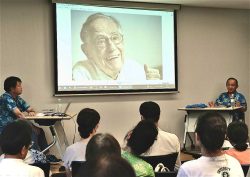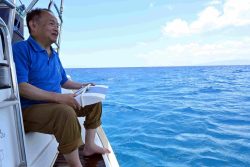Tokyo Exhibition Explores Yukio Mishima, Donald Keene friendship; Organized by Gakushuin Women’s College Students
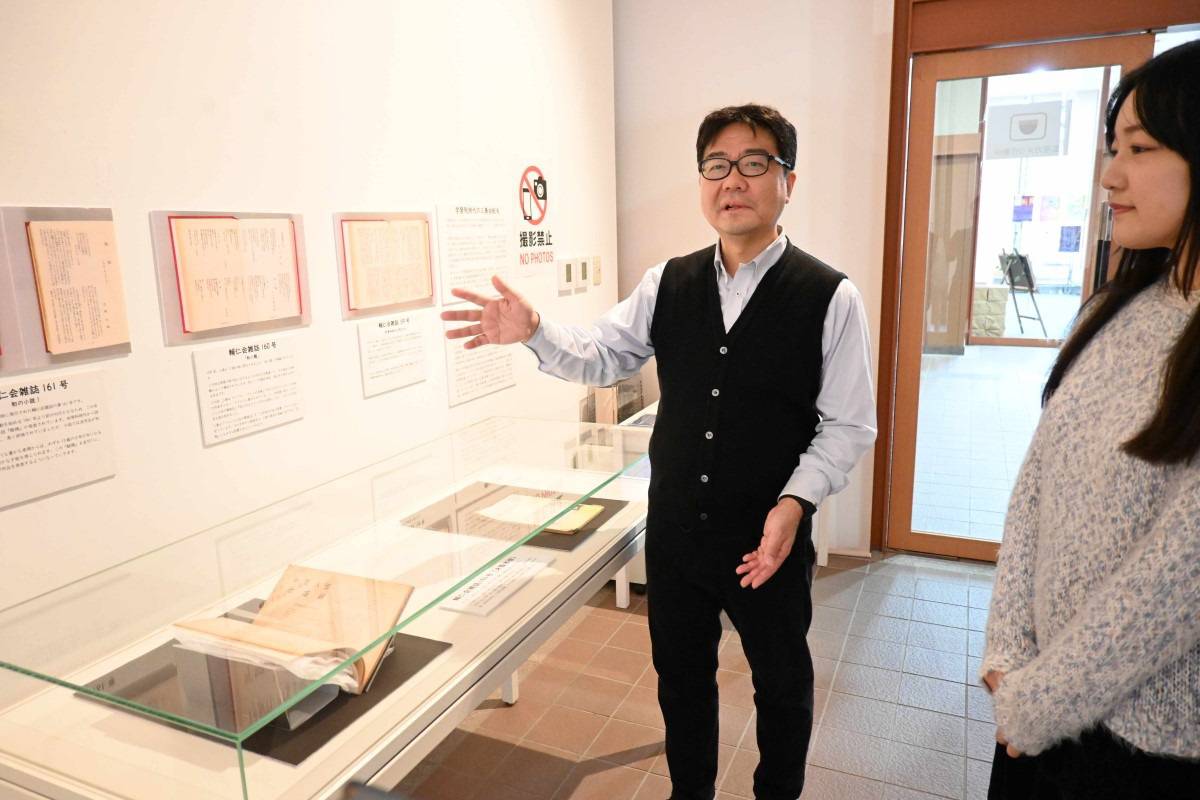
Prof. Motonori Makino, left, talks in front of the Hojinkai magazine display, along with fourth-year student Azusa Sato at Gakushuin Women’s College on Thursday.
14:21 JST, November 25, 2024
An exhibition to commemorate the 70th anniversary of the first meeting between Japanese literary giant Yukio Mishima (1925-1970) and Donald Keene (1922-2019), a key figure in the introduction of Japanese literature to the world, is taking place at Gakushuin Women’s College in Shinjuku Ward, Tokyo.
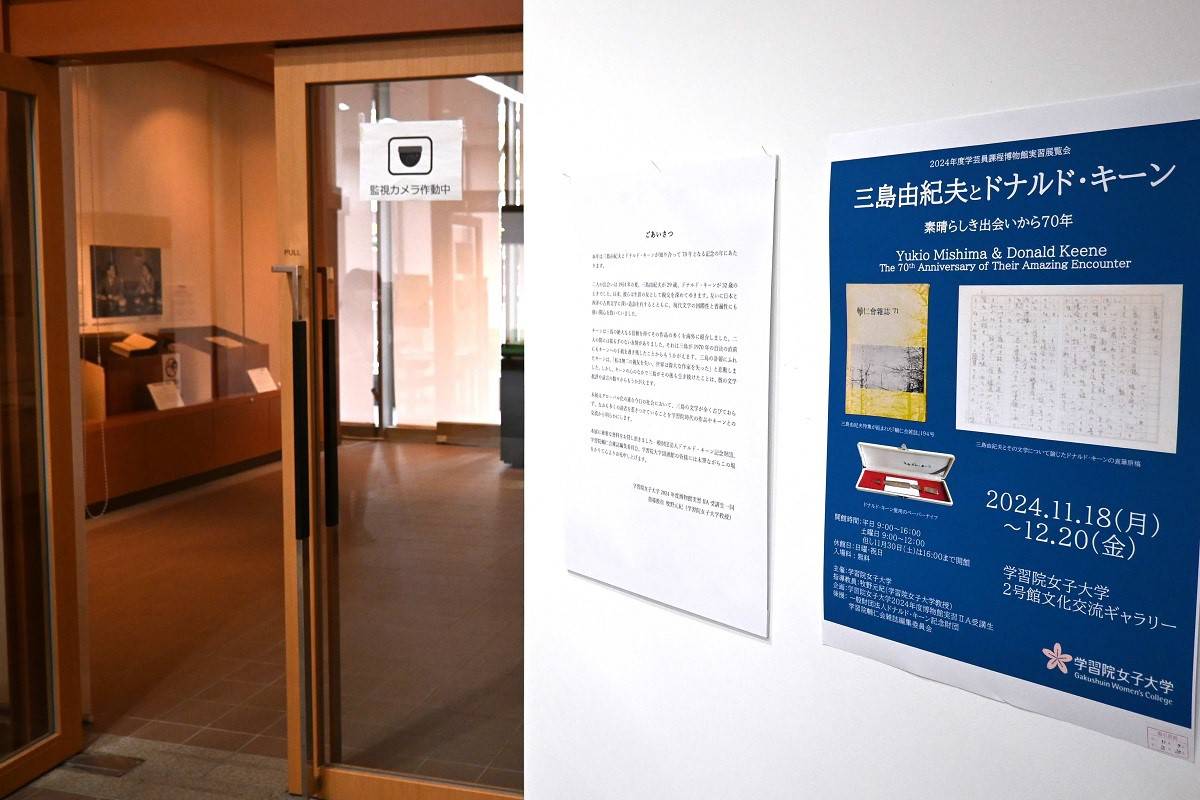
Entrance to the “Yukio Mishima & Donald Keene” exhibition
Mishima, whose birth centenary is next year, attended Gakushuin (formerly the Peers’ School) from elementary through high schools. The exhibition was organized by students from Gakushuin Women’s College as part of a museum curation training course. The students did the research, compiled the content and made the photo panels by themselves, which introduce Mishima’s contributions to Gakushuin’s in-house magazine, and the history of his friendship with Keene.
Mishima and Keene first met in 1954 at the Kabukiza Theatre in Tokyo through an introduction by Hoji Shimanaka, then president of publishing company Chuokoron (now Chuokoron-Shinsha Inc.). Mishima was 29, and Keene was 32. Keene was then studying at Kyoto University and enjoying his first stay in Japan.
The two, who both had a deep knowledge of classical Japanese and Western literature, mutually deepened their views on the universality of Japanese literature and became close friends.
“We enjoyed meeting and talking,” Keene wrote about Mishima in his autobiography. “Sometimes it was about literature, sometimes about world affairs or about the people we know in common.” It was a friendship that would continue until Mishima committed seppuku ritual suicide at the Ground Self-Defense Force garrison in Ichigaya, Tokyo, on Nov. 25, 1970. When Keene heard the news of Mishima’s death, he mourned, “I lost my best friend, and the world lost a great writer.”
The exhibition was prepared by six undergraduate students and one graduate student. Under the guidance of Prof. Motonori Makino of the museum curation course, and with the support of assistant Nanae Oguni, they began preparations during the summer holidays. They also visited the room where Mishima ended his life, which is now the home of the Defense Ministry.
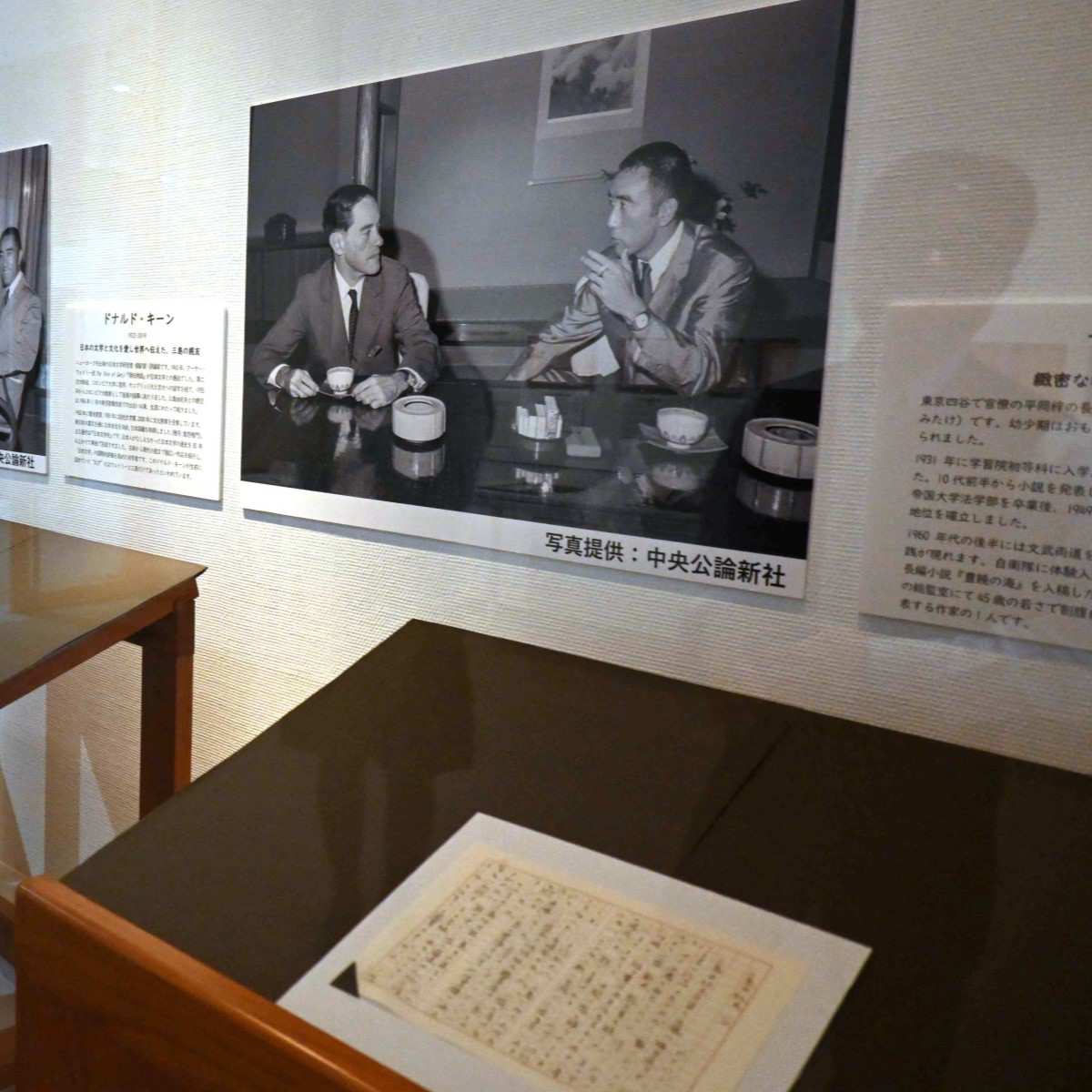

Left: Donald Keene’s handwritten Japanese manuscript is displayed in front of a photo of Keene and Yukio Mishima
Right: Seven works by Yukio Mishima recommended by the students
The exhibition introduces a Mishima work recommended by each student, the reasons for their recommendation, as well as their impressions of the work.
“I felt a strong sense of Mishima’s awareness of beauty by the way he wrote about it and the aesthetic philosophy he had,” said fourth-year student Azusa Sato. She recommended the novel “Kinjiki,” a story about love and revenge involving an elderly writer who has been betrayed by women, and a beautiful young man who is unable to love women because he is homosexual. Haruka Odachi, also in her fourth year, recommended the novel “Shizumeru Taki,” a long story about an “artificial romance” between a young man who doesn’t believe in love and a married woman. Odachi said, “It was a difficult theme to understand, but the subtleties of emotion were well expressed, and I could understand the feelings of the characters.”
The exhibition also features historical issues of the school’s Hojinkai magazine. An essay written by Mishima when he was 12 years old about his memories of primary school (No. 159, 1937) and a novel called “Sukanpo” which he contributed to when he was 13 (No. 161, 1938) are both on display. There is also an exhibition of Keene’s handwritten manuscript written in Japanese about his memories of Mishima.
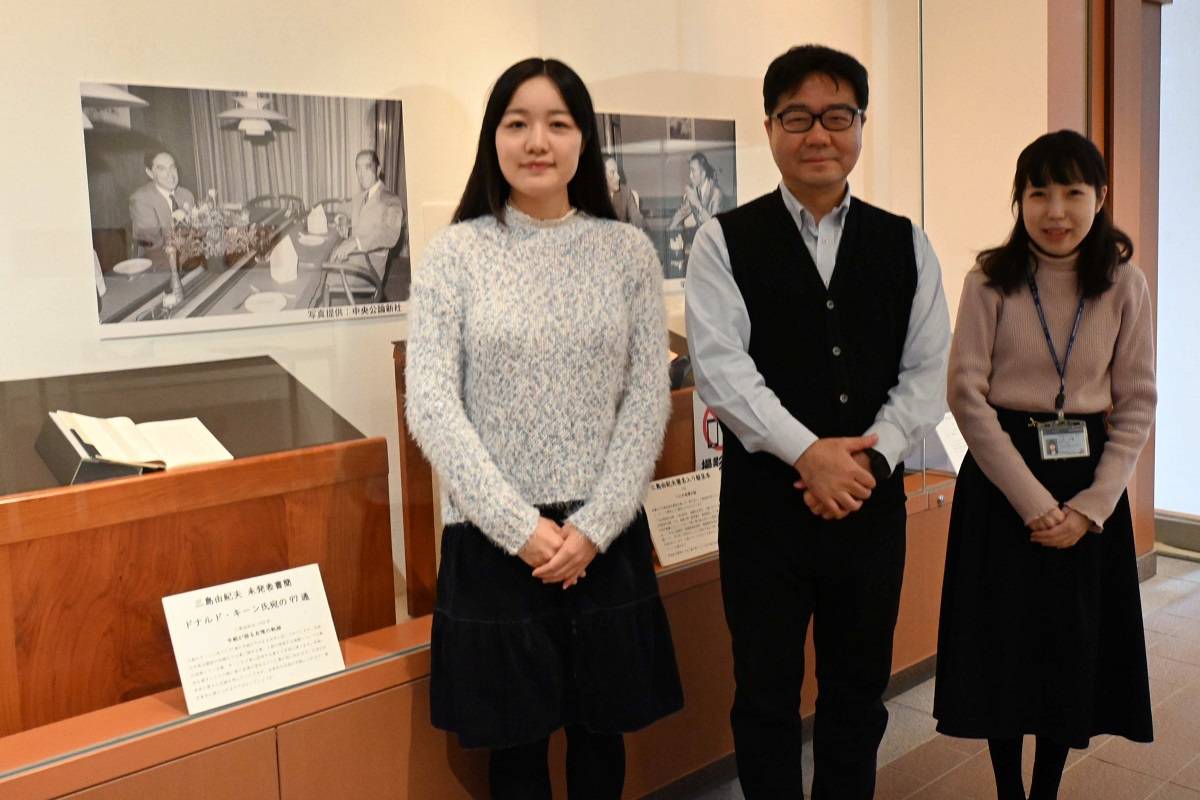
From left: Azusa Sato, Motonori Makino, Nanae Oguni pose in front of a photo of Yukio Mishima and Donald Keene at a French restaurant in Tokyo.
Keene’s adopted son, Seiki, on Nov. 30 will give a lecture on Mishima from Donald Keene’s perspective. There will also be an event where students introduce the works of Mishima that they recommend and from which the most highly recommended book will be chosen.
Makino said, “I think this exhibition provided new discoveries not only for the general public, but also for the faculty and students of Gakushuin.”
The venue for the exhibition is the Bunka Koryu Gallery in Building 2 of Gakushuin Women’s College. It is open from 9 a.m. to 4:30 p.m. on weekdays and from 9 a.m. to noon on Saturdays, and closed on Sundays and public holidays. Admission is free. The exhibition will run through Dec. 20. For more information, please check the exhibition’s Instagram account (@exhibit.gwc). You can also apply in advance for the lecture and event for Nov. 30 via the Instagram account.
"JN Specialities" POPULAR ARTICLE
-

The Japan News / Weekly Edition (12/12-12/18)
-

Noodle Dining Shunsai / Rich Oyster Ramen to Savor at Odasaga; Experienced 68-year-old Owner Creates Numerous Ramen Varieties
-

The Japan News / Weekly Edition (12/5-12/11)
-

People Keep Loved Ones’ Ashes Close in Special Jewelry, Small Urns as Unique Way to Memorialize Them
-

The Japan News / Weekly Edition (12/19-12/25)
JN ACCESS RANKING
-

Keidanren Chairman Yoshinobu Tsutsui Visits Kashiwazaki-Kariwa Nuclear Power Plant; Inspects New Emergency Safety System
-

Tokyo Economic Security Forum to Hold Inaugural Meeting Amid Tense Global Environment
-

Imports of Rare Earths from China Facing Delays, May Be Caused by Deterioration of Japan-China Relations
-

University of Tokyo Professor Discusses Japanese Economic Security in Interview Ahead of Forum
-

Japan Pulls out of Vietnam Nuclear Project, Complicating Hanoi’s Power Plans




